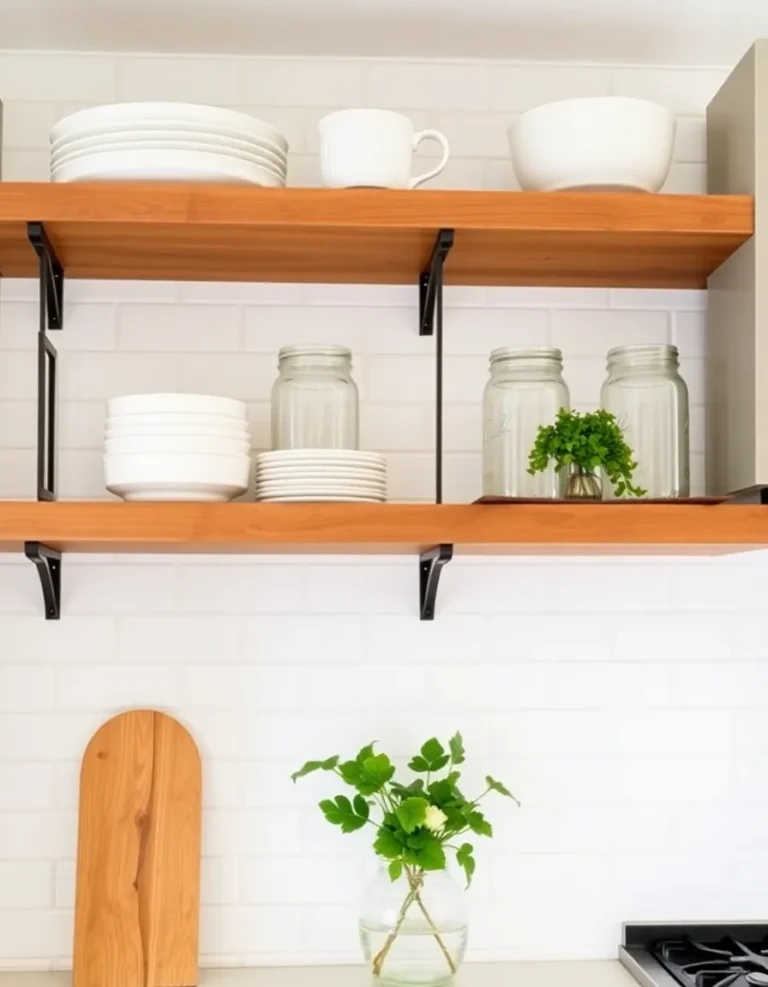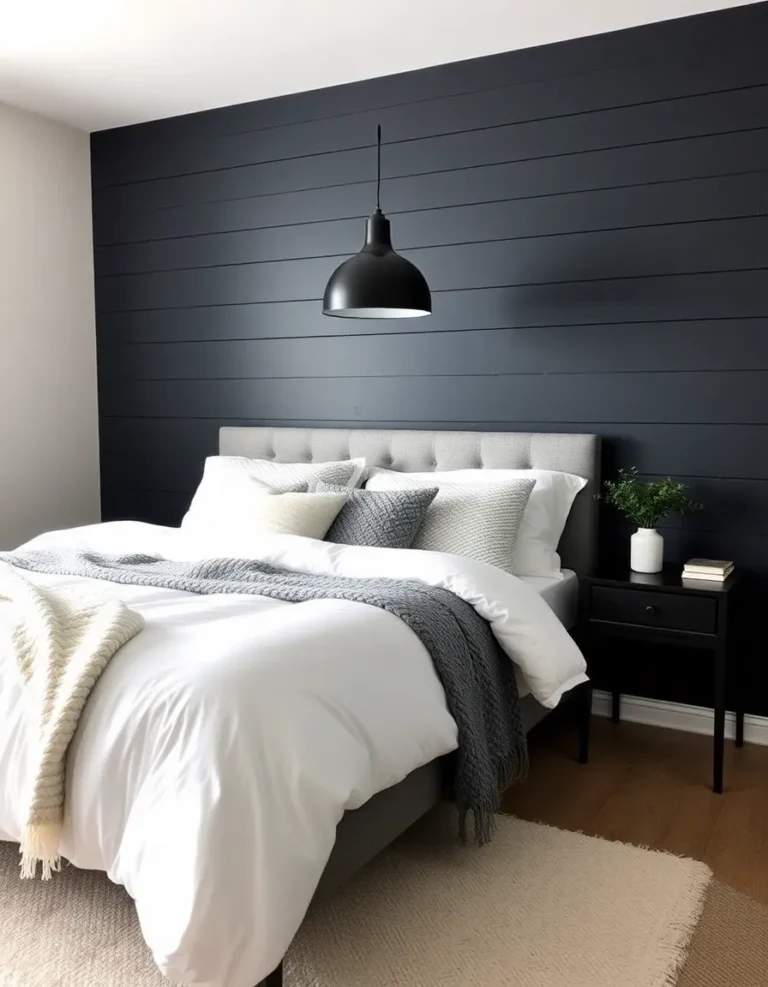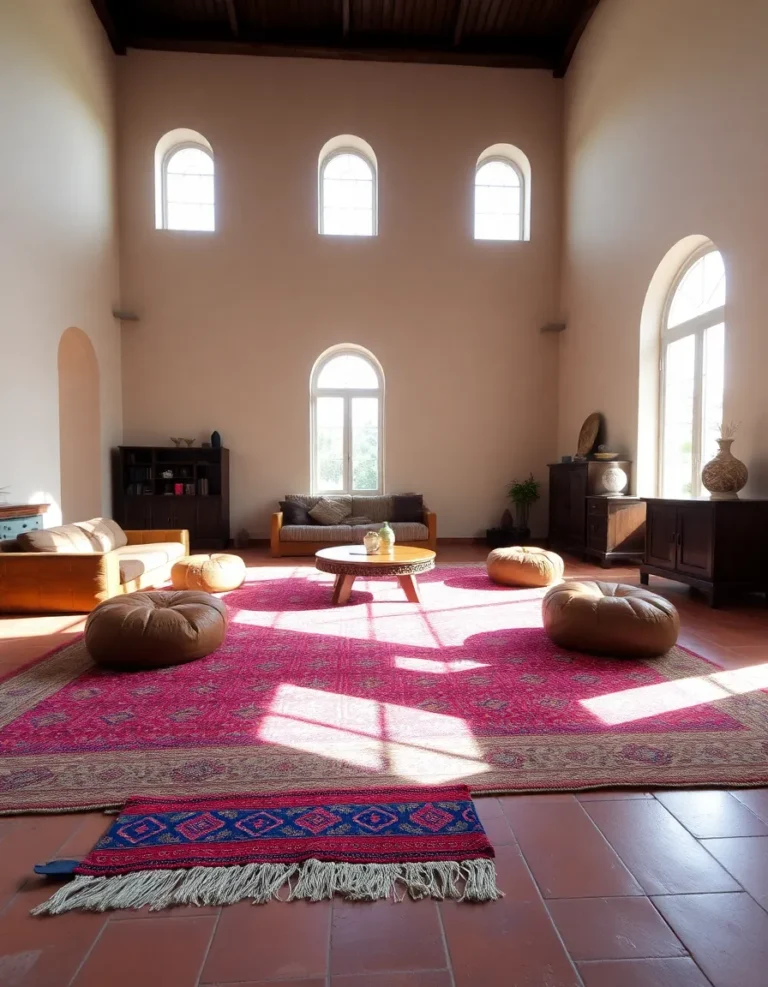13 Serene Japanese Home Office Designs to Boost Focus
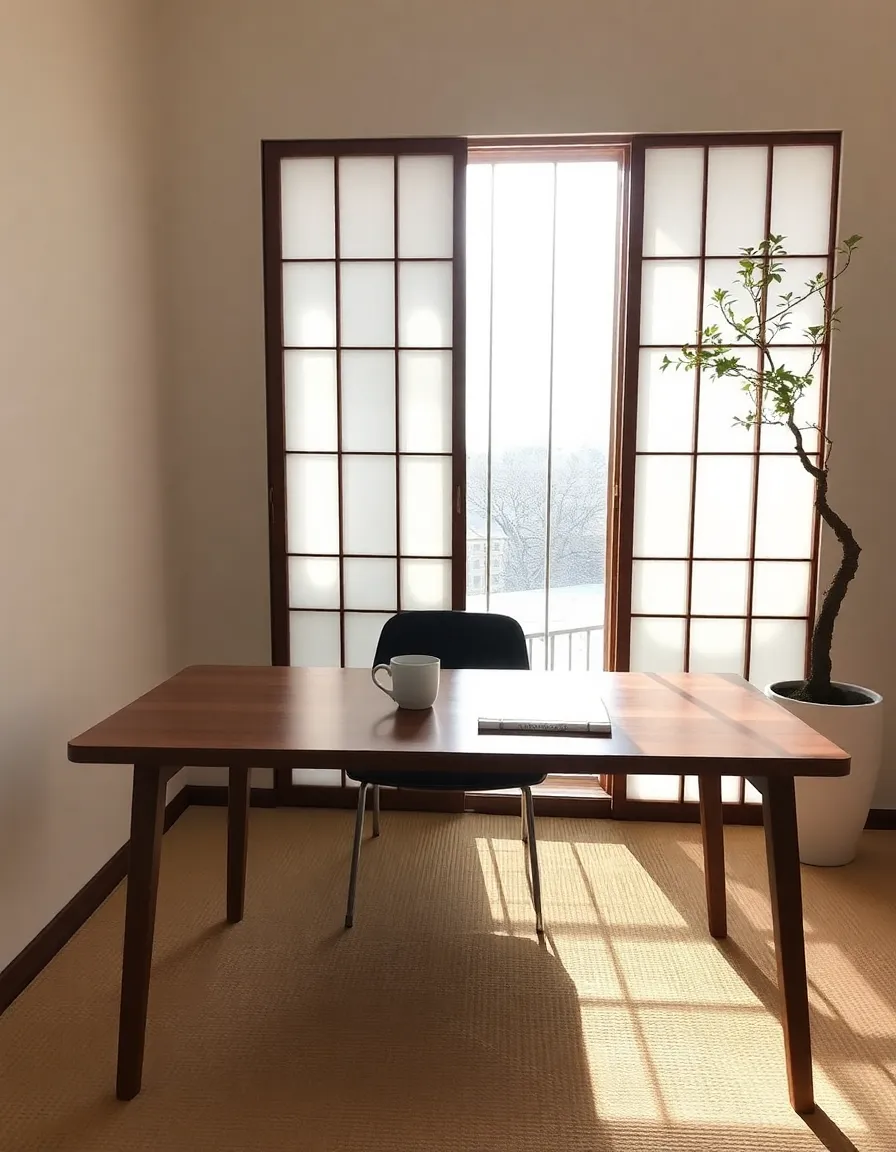
Hey there, fellow work-from-home warrior! If you’re anything like me, your home office is your sanctuary—or at least, it should be. But let’s be real: staring at the same four walls every day can get old fast, especially if your setup feels more “cluttered chaos” than “Zen masterpiece.” That’s where Japanese design swoops in like a minimalist superhero. Clean lines, natural materials, and a vibe so calming it could probably lower your blood pressure. Intrigued? Let’s dive into 13 serene Japanese home office designs that’ll make your workspace feel like a spa for your brain.
Why Japanese design, you ask? Well, have you ever noticed how stepping into a well-designed Japanese space instantly makes you exhale? It’s not magic (though it feels like it). It’s intentional simplicity—every item has a purpose, every material feels grounding, and there’s zero visual noise to distract you from actually getting work done. Whether you’re into the stark elegance of wabi-sabi or the cozy warmth of muji style, there’s a Japanese-inspired office here with your name on it. Ready to transform your desk dungeon? Let’s go.
1. The Shoji Screen Sanctuary
Picture this: soft, diffused light filtering through delicate rice paper screens, casting gentle shadows on your desk. Shoji screens aren’t just for traditional tea houses—they’re a game-changer for home offices. Use them as room dividers to carve out a dedicated workspace in an open-plan living area, or place one behind your desk to create a serene backdrop for Zoom calls (goodbye, messy bookshelf shame). Pro tip: Pair with a low wooden desk and floor cushion for full zazen vibes—just don’t blame me if you start meditating instead of answering emails.
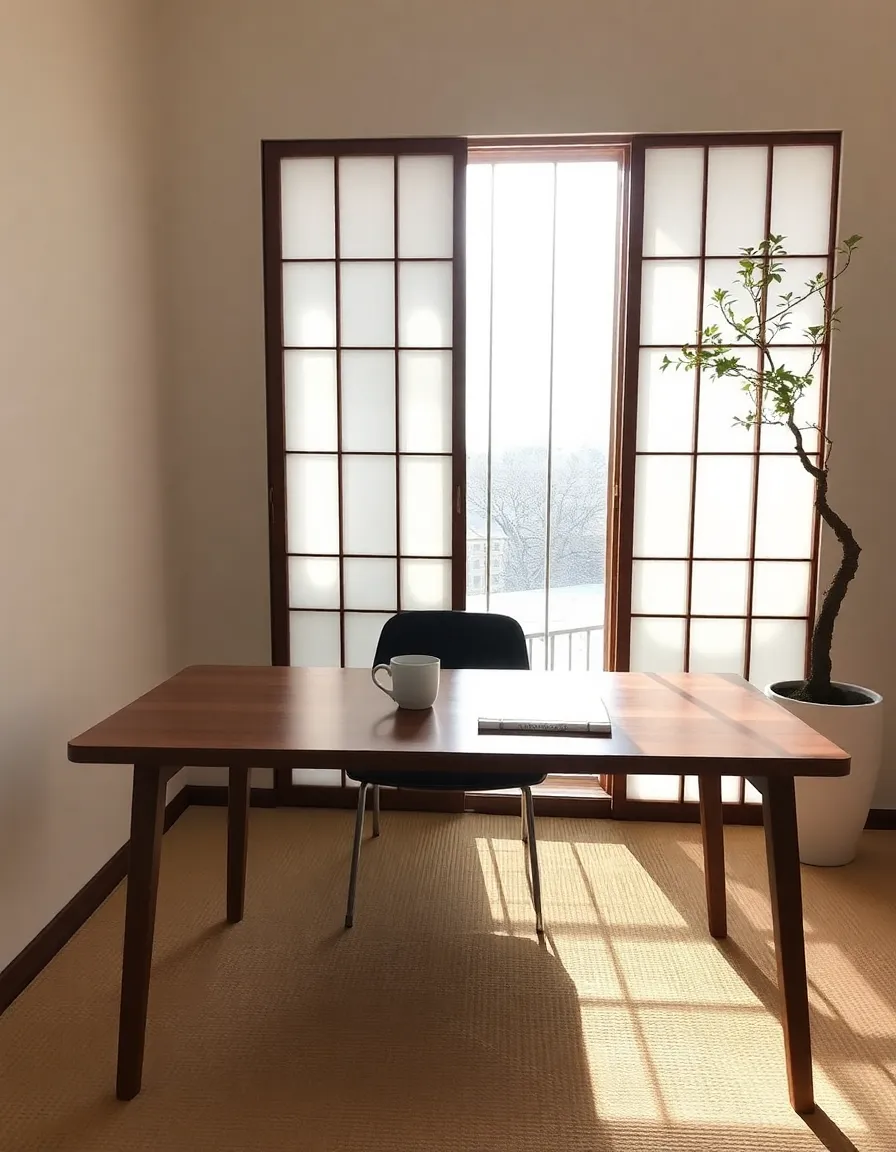
2. The Tatami Mat Retreat
Who says you need a chair to be productive? Swap your squeaky office throne for a tatami mat zone—the ultimate ergonomic (and aesthetic) flex. These woven rush mats are springy underfoot, naturally insulating, and smell faintly of hay (in a good way, promise). Go full tradition with a zabuton cushion and low chabudai table, or mix modern with a floor-level desk and back support pillow. Bonus: Your knees will thank you for ditching that “executive” chair that’s basically a lumbar crime scene.
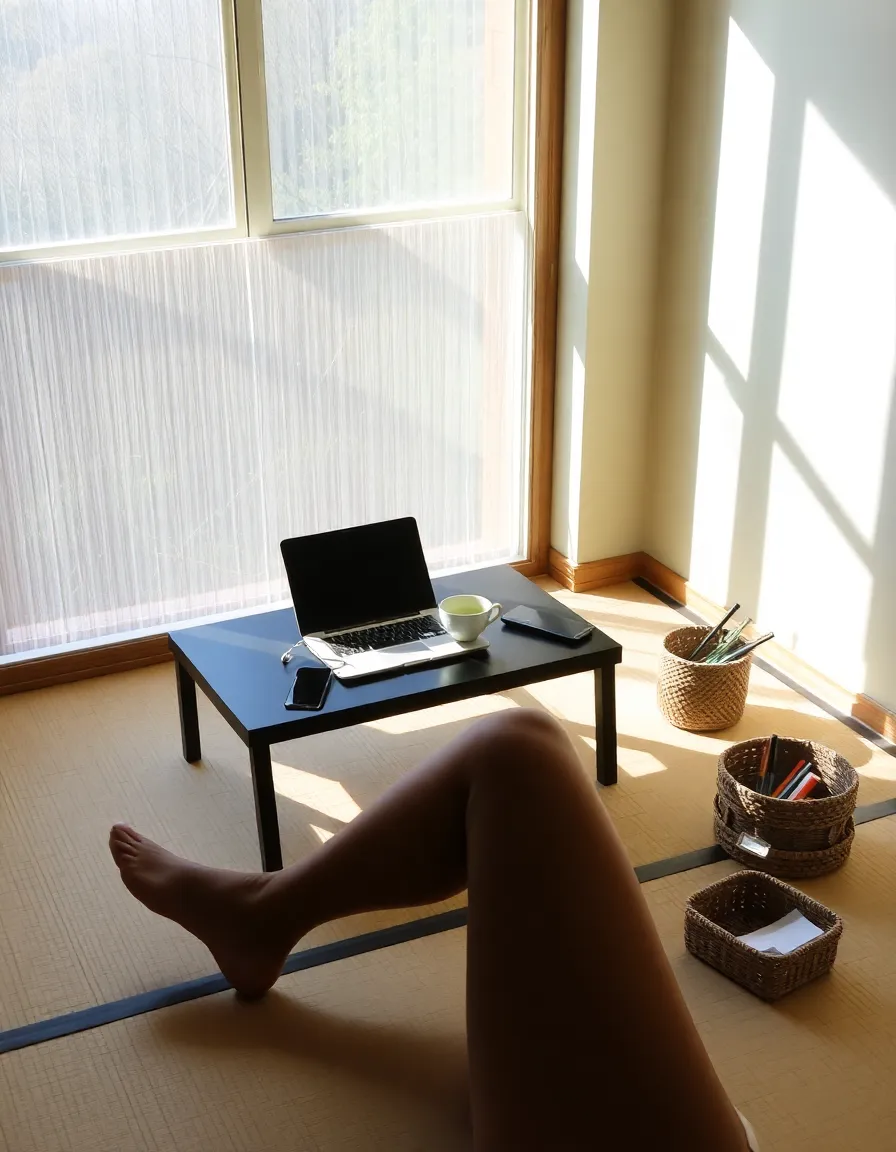
3. The Zen Rock Garden Desk
Raise your hand if your current desk accessories consist of half-empty coffee cups and Post-it notes from 2019. Time to Marie Kondo that mess and replace it with a miniature zen garden. A sleek black sand tray with a tiny wooden rake lets you “reset” your mind between tasks (way more satisfying than doomscrolling). Keep the rest of the desk sparse—think a single stone paperweight, an inkstone-inspired pen holder, and maybe one very disciplined succulent. FYI, watching coworkers’ jealous faces during video calls? Priceless.

4. The Bonsai & Bamboo Oasis
Plants = productivity. Science says so (probably). But instead of that sad desk fern you keep forgetting to water, why not go for a petite bonsai or a graceful bamboo stalk in a ceramic pot? Japanese design treats plants like living sculpture, so position yours where you’ll actually see it—next to your monitor, on a floating shelf, or as a centerpiece on a side table. Pro tip: If you’re botanically challenged, fake bamboo looks surprisingly legit and won’t judge you for your inconsistent watering habits.
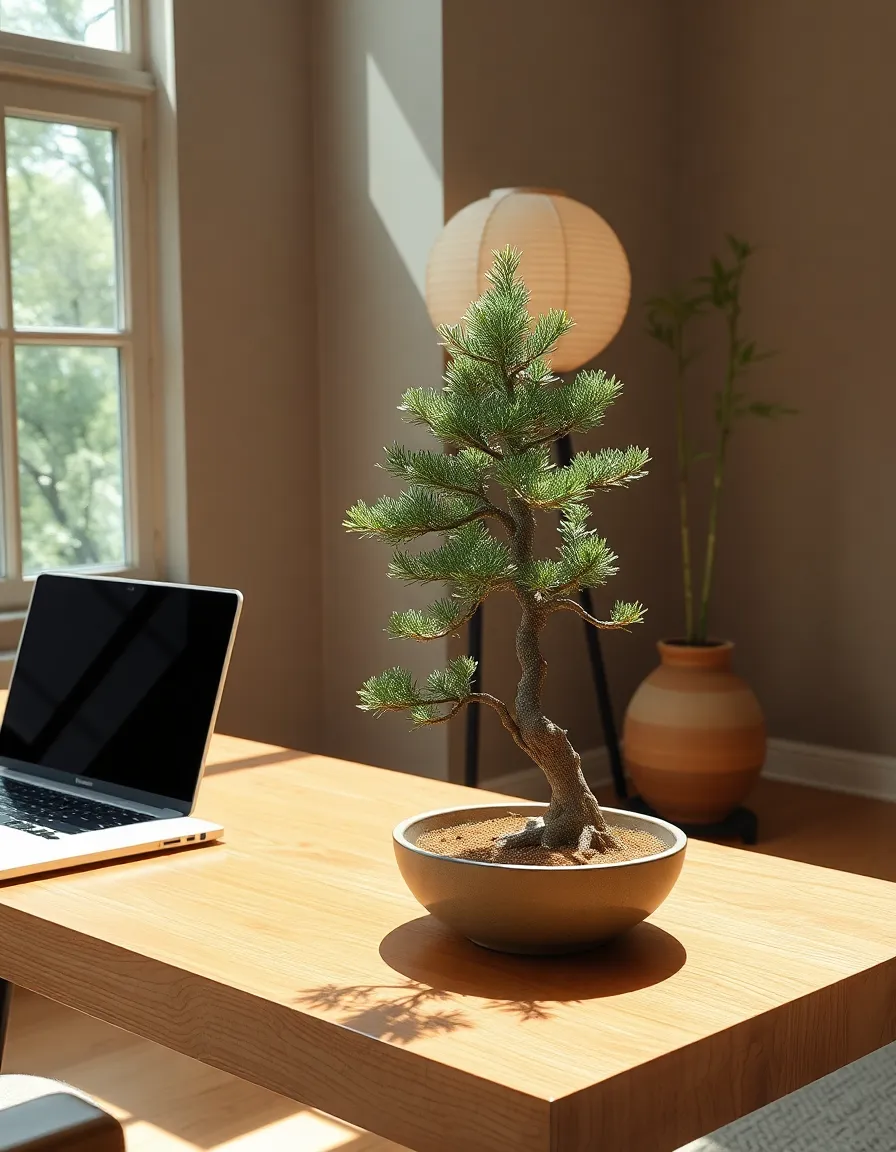
5. The Wabi-Sabi “Perfectly Imperfect” Nook
Repeat after me: Chips in the pottery? Cracks in the wood? Character. Wabi-sabi celebrates the beauty of flaws, so if your “dream office” currently looks like a garage sale reject, lean into it. Sand down that dented thrift-store desk to show the grain, display your cracked favorite mug with pride, and let your bookshelf lean slightly (it’s not crooked, it’s “organic”). The goal isn’t Insta-perfection—it’s a space that feels lived-in and honest. And hey, if anyone questions the coffee stain on your rug, just call it “patina.”

6. The Kotatsu Cubbyhole
Winter work-from-home blues? Meet the kotatsu—Japan’s genius heated table that’s basically a hug for your lower half. Imagine: a low table with a built-in heater, hidden under a plush blanket that traps the warmth while you type. Add a floor cushion, and suddenly “I’ll just work from bed” becomes “I’m professionally cozy.” Summer hack: Remove the heater and use it as a regular table. Warning: May cause extreme reluctance to attend in-person meetings ever again.
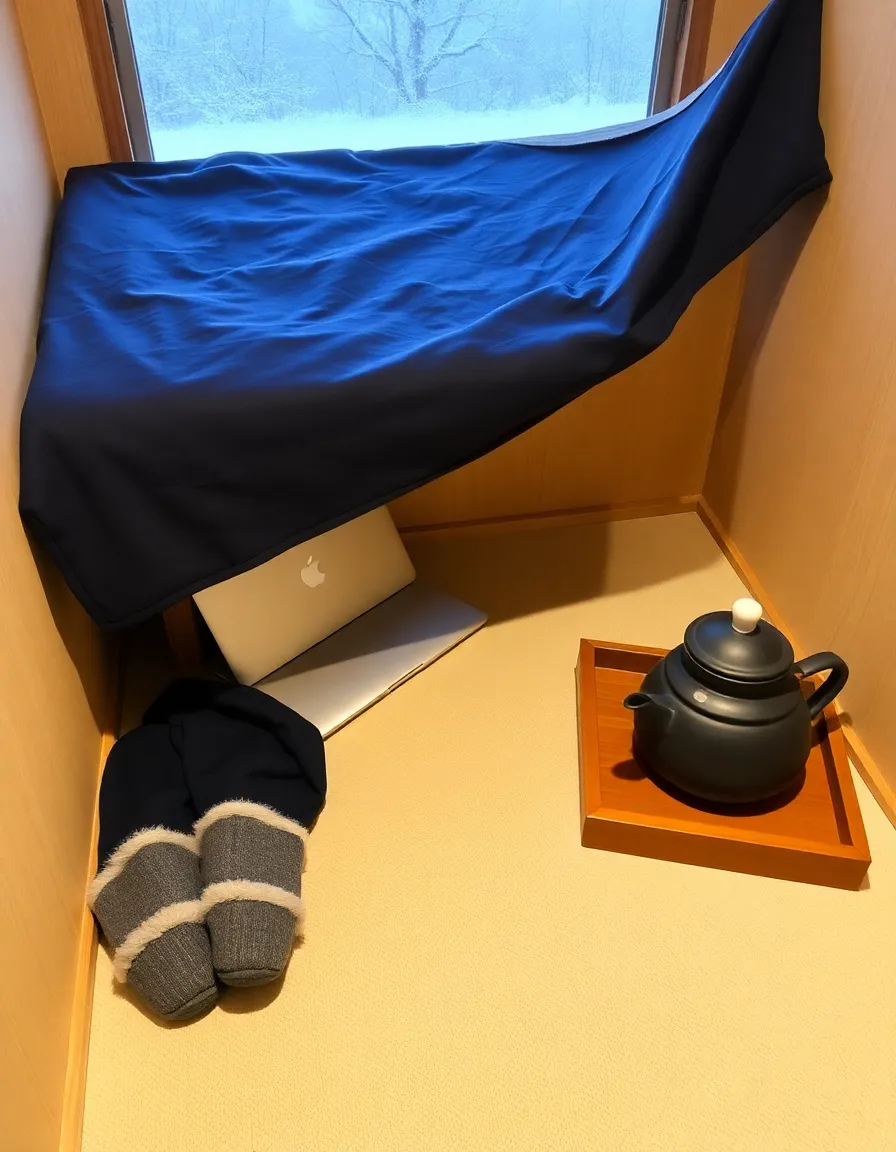
7. The Floating Desk Illusion
Tiny space? No problem. Japanese design masters the art of making small rooms feel airy, and a wall-mounted floating desk is your ticket to clutter-free bliss. Choose a light wood tone or white finish to keep things visually weightless, then add a single shelf above for essentials (read: not your entire Funko Pop collection). The lack of bulky legs means more room for stretching—or, let’s be honest, piling up laundry when no one’s watching.

8. The Engawa-Inspired Sunroom Office
Engawa—those gorgeous wooden verandas in traditional Japanese homes—blur the line between indoors and out. Recreate the vibe by setting up your workspace near floor-to-ceiling windows with sheer curtains that flutter in the breeze. Add a wooden platform to elevate your desk slightly, as if you’re perched on the edge of a garden. Even if your “garden” is a fire escape with a sad potted herb, this setup guarantees vitamin D and daydream fuel.

9. The Minimalist Stationery Shrine
If your pen hoard rivals a stationery store, this one’s for you. Japanese office supplies are next-level satisfying—think featherweight aluminum scissors, grid-paper notebooks that make your handwriting look miraculously neat, and brush pens that turn your grocery list into calligraphy practice. Dedicate a shallow drawer or wall grid to display your tools like museum pieces. Suddenly, “I need to file taxes” feels more like “I shall perform a sacred ritual with my exquisite washi tape.”
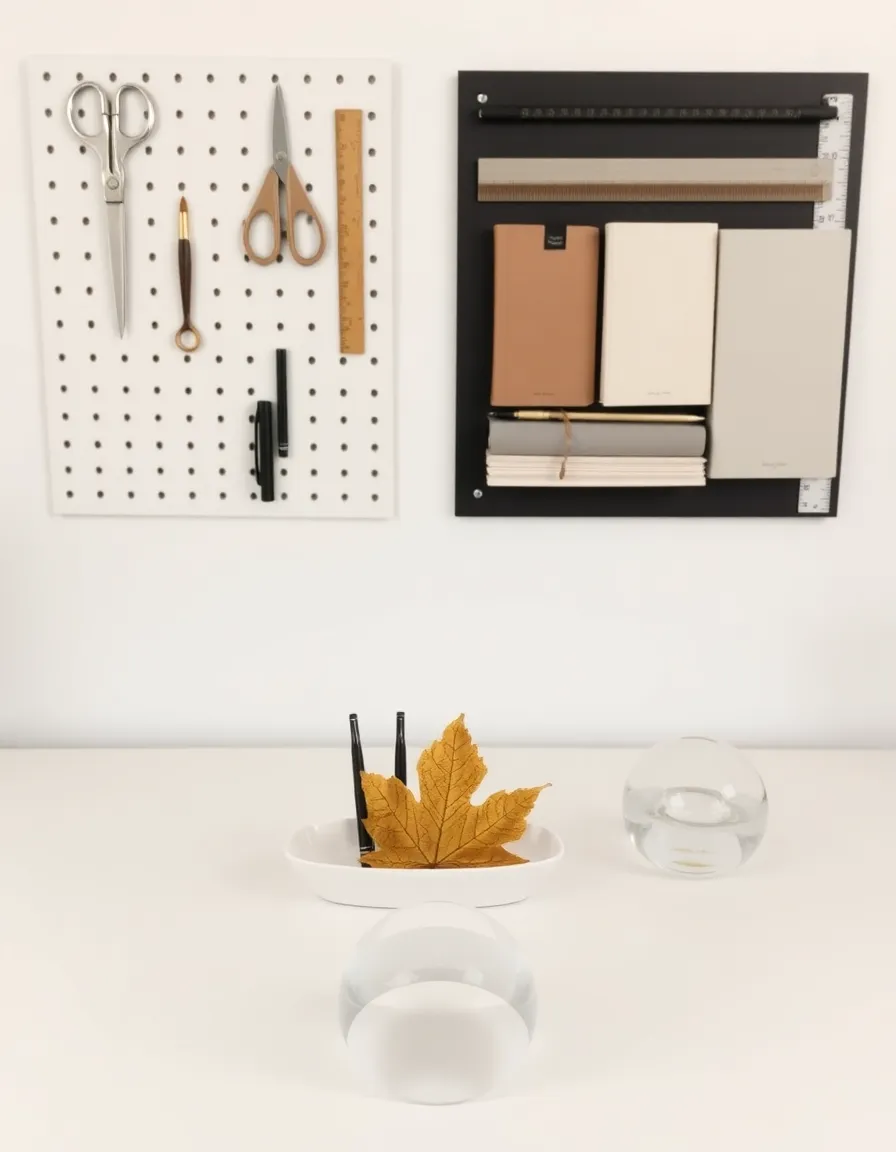
10. The Ofuro Bathroom Break Nook
Okay, hear me out: Japanese soaking tubs (ofuro) are the pinnacle of relaxation, but most of us can’t install one next to our printers. Instead, borrow the spa-like serenity with a cedar-scented diffuser, a small tabletop fountain, and a strictly “no harsh overhead lights” policy. Add a deep green accent wall or pebble-textured wallpaper to mimic an outdoor bathhouse. Just maybe don’t actually work from the tub—laptops and water are mortal enemies.
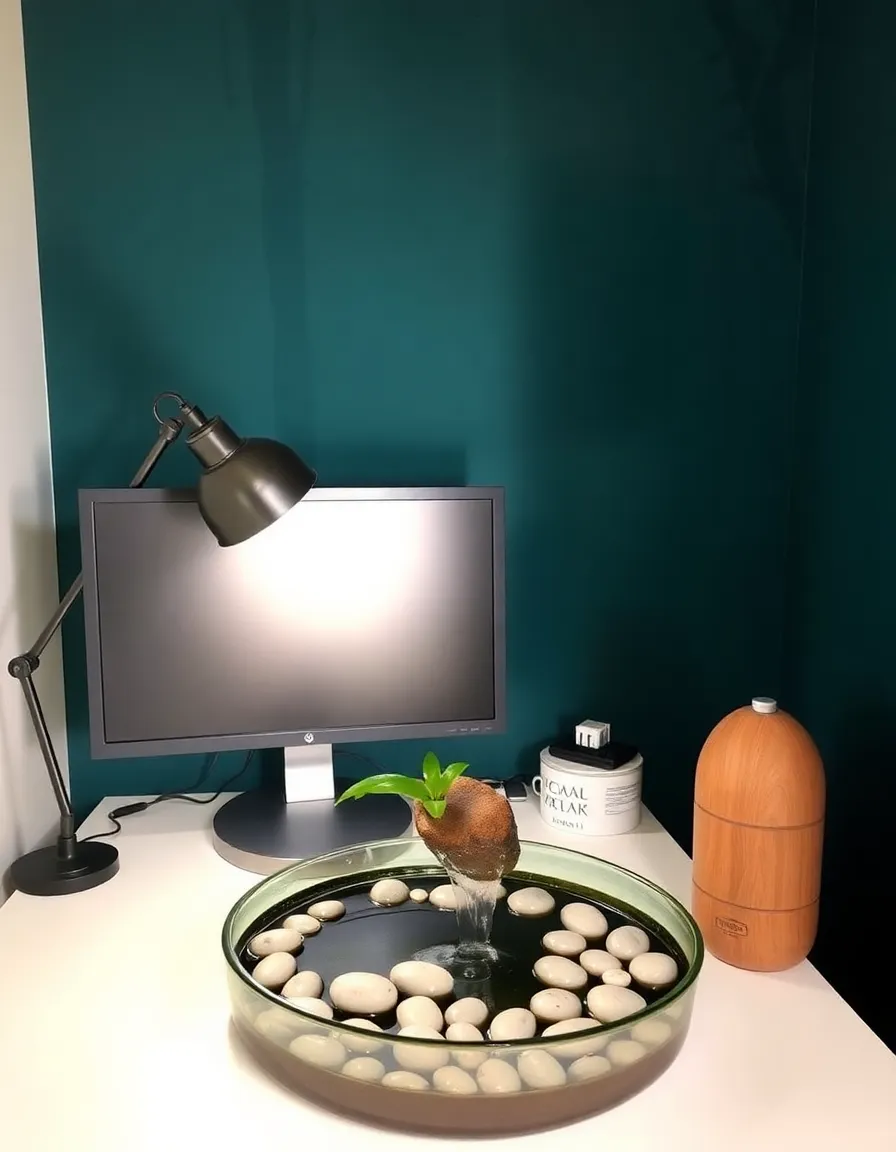
11. The Kaizen Productivity Corner
Kaizen—the art of continuous improvement—isn’t just for corporate team-building exercises. Apply it to your workspace with modular, adaptable furniture that evolves with your needs. Think: a desk with adjustable height, stackable storage cubes you can rearrange weekly, and a pegboard system for shifting your organization on a whim. The key is accepting that your perfect setup today might not work tomorrow—and that’s okay. Unlike my gym membership, this flexibility actually gets used.
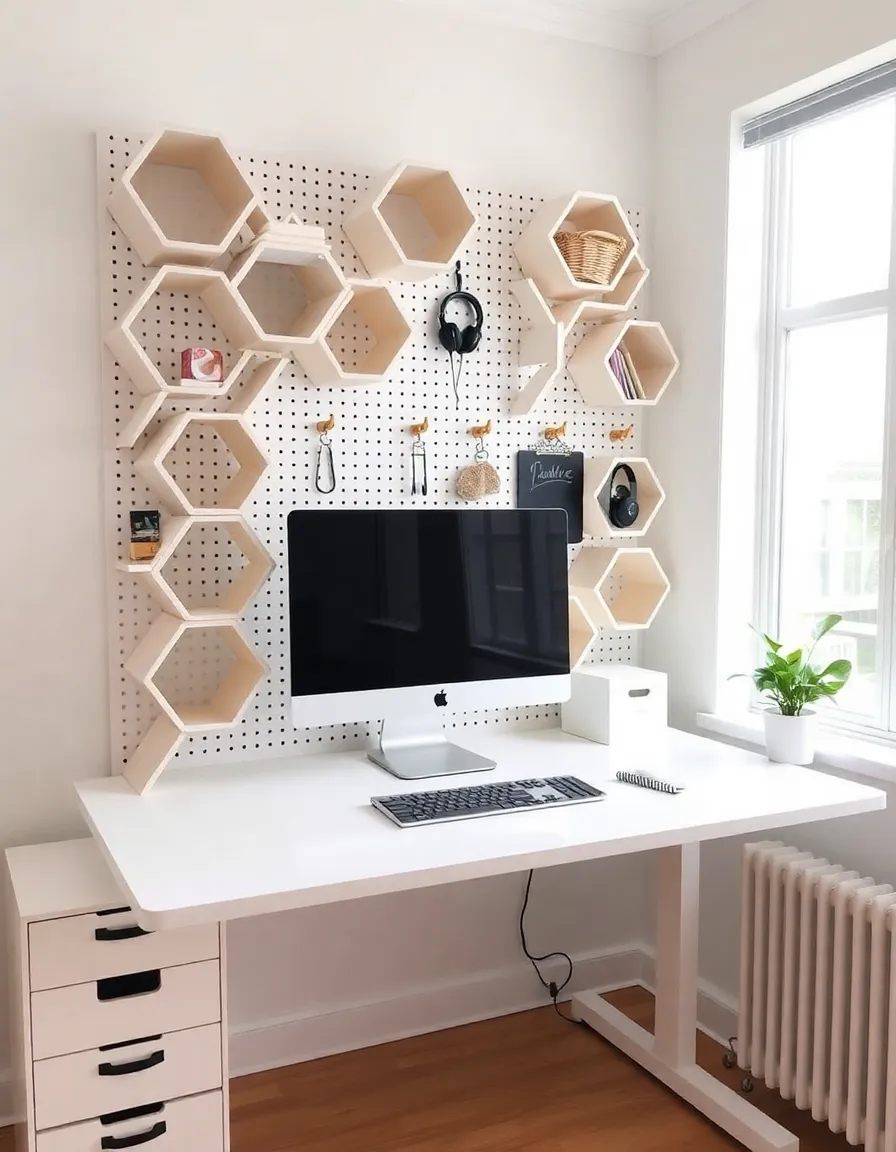
12. The Tea Ceremony Break Space
Mandatory “step away from the screen” time, Japanese-style. Carve out a tiny side table for a proper matcha set—whisk, bowl, the whole nine yards. The ritual of preparing tea forces you to pause, breathe, and remember that inbox zero isn’t life’s ultimate goal. Can’t commit to full ceremonial gear? Even a nice electric kettle and a single handmade cup will do. Pro tip: Whisper “I’m honoring centuries of tradition” when coworkers ask why you’re “just making tea.”

13. The Futuristic Japandi Hybrid
Can’t choose between Japanese minimalism and Scandinavian hygge? Enter Japandi—the lovechild of both styles that’s basically the interior design equivalent of a perfectly balanced sushi burrito (trust me, it works). Neutral tones, clean lines, and just enough texture to keep things warm. Try a pale wood desk with hairpin legs, a single statement pendant light in woven rattan, and a super-plush neutral rug underfoot. It’s like your office got a mindfulness app and a cashmere sweater at the same time.
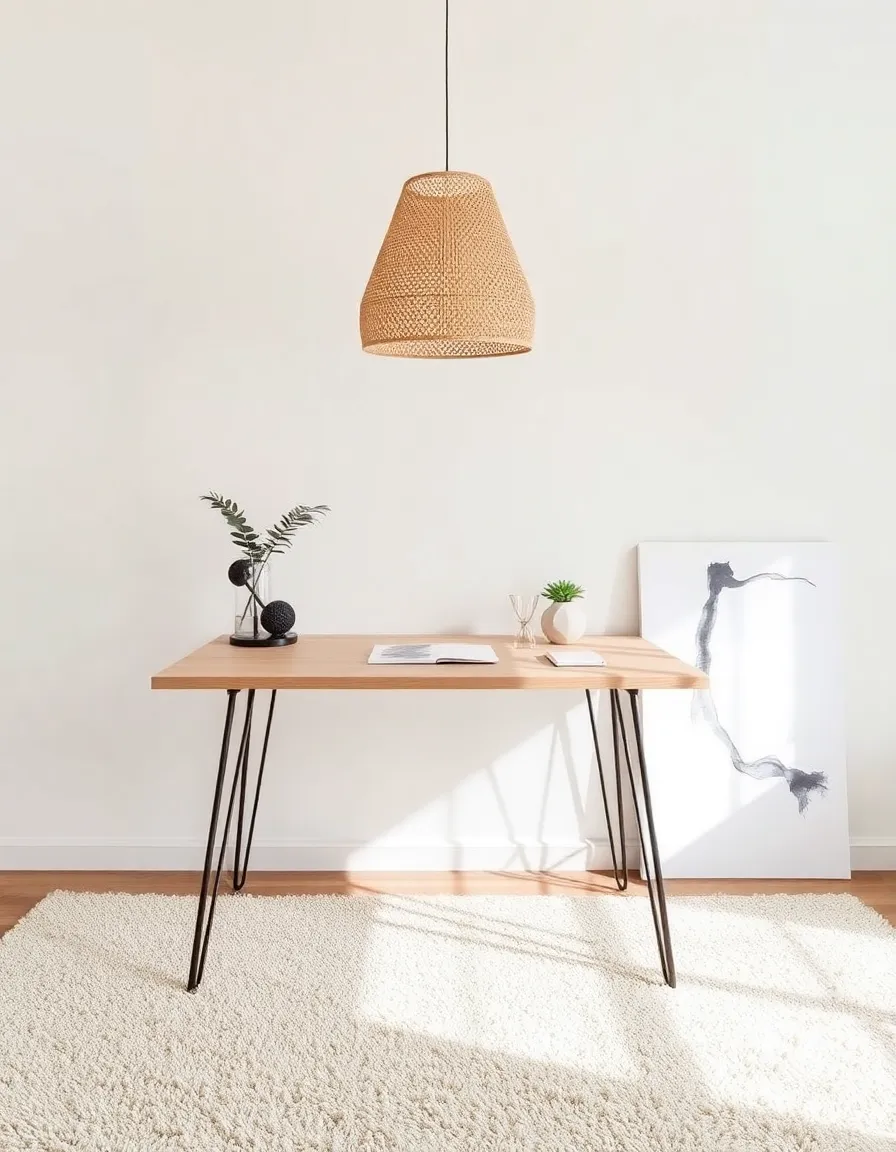
And there you have it—13 ways to turn your home office into a Japanese-inspired haven of focus and calm. Whether you go full zen monk with tatami mats or keep it subtle with a single bonsai, remember: the goal isn’t perfection. It’s creating a space that makes you want to sit down and work (or at least hate it slightly less). Now if you’ll excuse me, I need to go rearrange my desk… for the fifth time this week.

